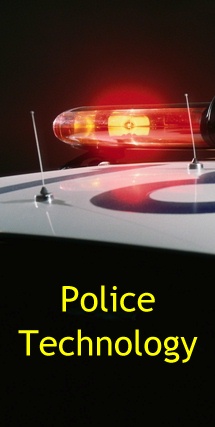|
Section Four Technology in Police Management
Personnel and Training Technology
Managing and Implementing Technology
Future and Emerging Technologies
According to the description of
The Management of Technology and Innovation: A Strategic Approach, “This is the best book
on the market that addresses the Management of Technology and Innovation. The intellectual content is solid and taken from
rigorous research, yet is applicable to all technology in general. Aside the intellectual content, it is a tool that students
can use to actively learn about the subject, through exercises, case study, and provoking discussion questions. The theme
of the book is consistent cover to cover and the logic of its organization is excellent. I would adopt this text before all
others. It poses the fairest treatment of technology management in general rather than being obsessed on one kind of technology.
It affords the opportunity to the instructor to do so much more than just lecture. It is truly about the MANAGEMENT of technology,
rather than using that important word in a superficial and cavalier way.”
According to the book description of
Management of Technology: Managing Effectively in Technology-Intensive Organizations, “An updated revision
of the bestselling leadership book for engineering and technology managers. Knowledge of modern technology management concepts
and best practices provides the foundation for effective job performance in technology-driven business environments. Management
of Technology discusses cutting-edge management concepts, tools, and techniques that effectively work in today's technology-intensive
organizations.
New management tools and techniques play an increasingly
important role in every organization for creating quality products, services, and content faster, cheaper, and at a higher
quality. Technology crosses virtually all levels and all disciplines of an enterprise. Therefore, the principles of managing
technology are relevant not only to people in the traditional engineering-scientific community, but also apply to any organization
and business that must effectively deal with the application, integration, and transfer of technology. Financial institutions,
government agencies, architectural firms, and healthcare providers are just a few examples of the vast array of organizations
that must function effectively in technology-based environments, and therefore be able to manage technology. Specifically,
this book features:
Methods for assessing the effectiveness
and performance of the organization and its management processes; Insight into the functioning of contemporary work processes,
such as concurrent engineering, design-build, integrated product development, and phase-gate processes; Special tools and
techniques for effectively managing technology-based projects, including dealing with organizational interfaces from R&D
to markets; Discussion of real-world field studies, cases, and best practices; Emphasis on people issues, such as leadership,
teamwork, communications, and commitment, throughout the book. Management of Technology is a complete reference book, invaluable
for managers and professionals in technology-intensive business environments.”
According to the book description
of Strategic Management of Technology and Innovation, “The 5th Edition of Strategic Management
of Technology and Innovation by Burgelman, Christensen, and Wheelwright continues its unmatched tradition of market leadership,
by using a combination of text, readings, and cases to bring to life the latest business research on these critical business
challenges. Strategic Management of Technology and Innovation takes the perspective of the general manager at the product
line, business unit, and corporate levels. The book not only examines each of these levels in some detail, but also addresses
the interaction between the different levels of general management - for example, the fit between product strategy and business
unit strategy, and the link between business and corporate level technology strategy. Each part of the book starts with an
introductory chapter laying out an overall framework and offering a brief discussion of key tools and findings from existing
literature. The remainder of each part offers a selected handful of seminar readings and case studies. Almost all of the cases
deal with recent events and situations, including several that are concerned with the impact of the Internet. A few "classics"
have been retained, however, because they capture a timeless issue or problem in such a definitive way that the historical
date of their writing is irrelevant.”
|
